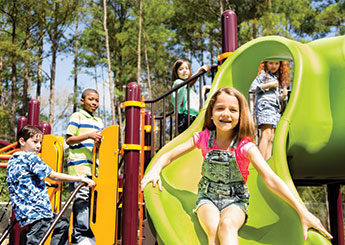Playground-related brain injuries up ‘significantly’ among kids, CDC says

Photo: Pamela Moore/iStockphoto
Atlanta – The number of children who suffer traumatic brain injuries on playgrounds has “increased significantly,” according to a study from the Centers for Disease Control and Prevention.
Researchers analyzed hospital data from the National Electronic Injury Surveillance System. They found that every year from 2005 to 2013, an average of more than 21,000 children 14 and younger were treated in emergency departments for TBIs suffered on playgrounds. Children ages 5 to 9 accounted for slightly more than half of all visits, and 58.6 percent of visits involved boys. Overall, 95.6 percent of children were treated and released, although 2.6 percent were hospitalized or transferred for further care.
About one-third of the injuries occurred at school, researchers said. The equipment most often associated with TBIs were monkey bars and playground gyms (28.3 percent), followed by swings (28.1 percent).
The findings emphasize the importance of adult supervision, equipment maintenance, and better playground surfaces and environments, researchers said. They added that improved public awareness about TBIs and concussions might have contributed to the increase in hospital visits.
“Playgrounds are a place of recreation for children and contribute to their growth and development, but these benefits are accompanied by the risk for injury,” researchers said in the study. “TBIs sustained during childhood could have implications for physical and cognitive development, depending on the child’s age and severity of the injury. Therefore, strategies to reduce the incidence and severity of TBIs sustained on playgrounds are needed.”
The study was published in the May issue of the journal Pediatrics.
Post a comment to this article
Safety+Health welcomes comments that promote respectful dialogue. Please stay on topic. Comments that contain personal attacks, profanity or abusive language – or those aggressively promoting products or services – will be removed. We reserve the right to determine which comments violate our comment policy. (Anonymous comments are welcome; merely skip the “name” field in the comment box. An email address is required but will not be included with your comment.)

